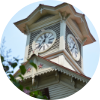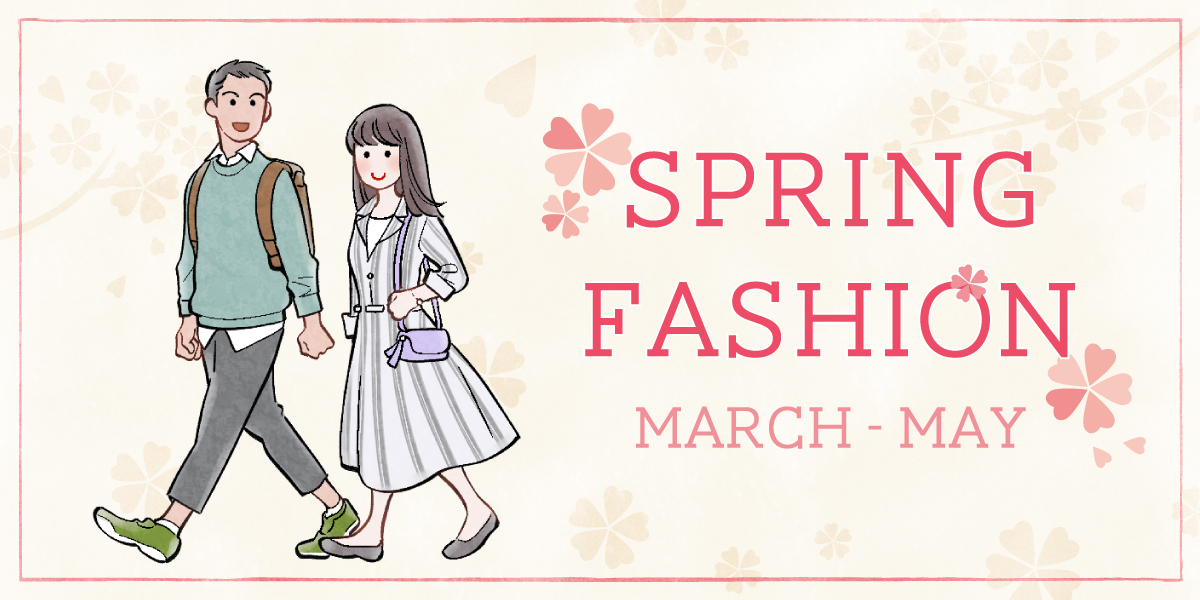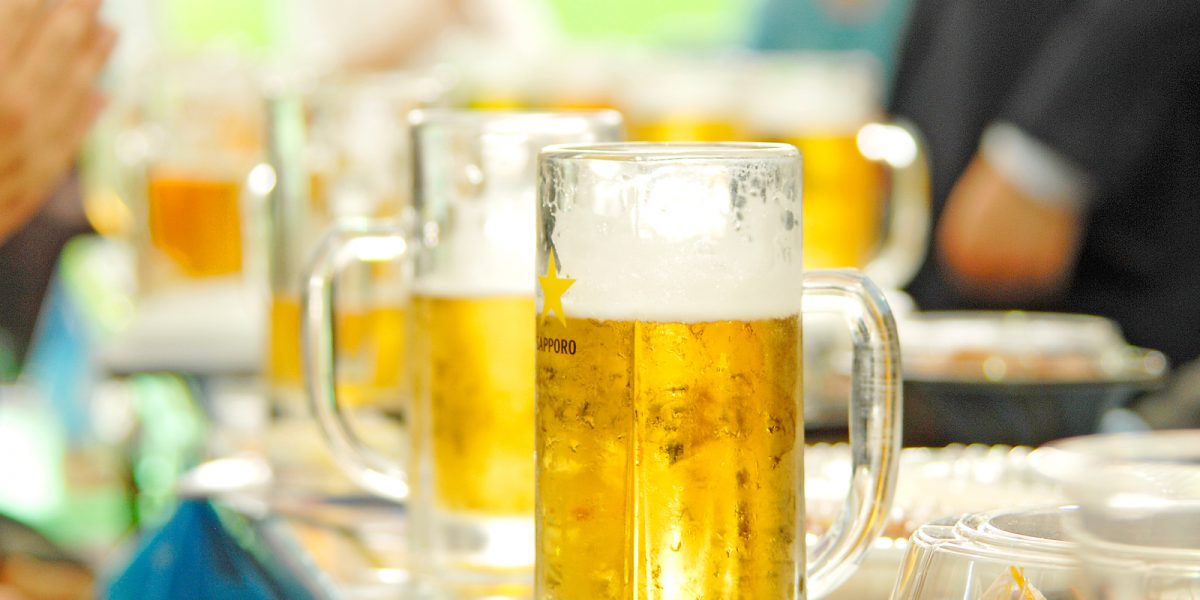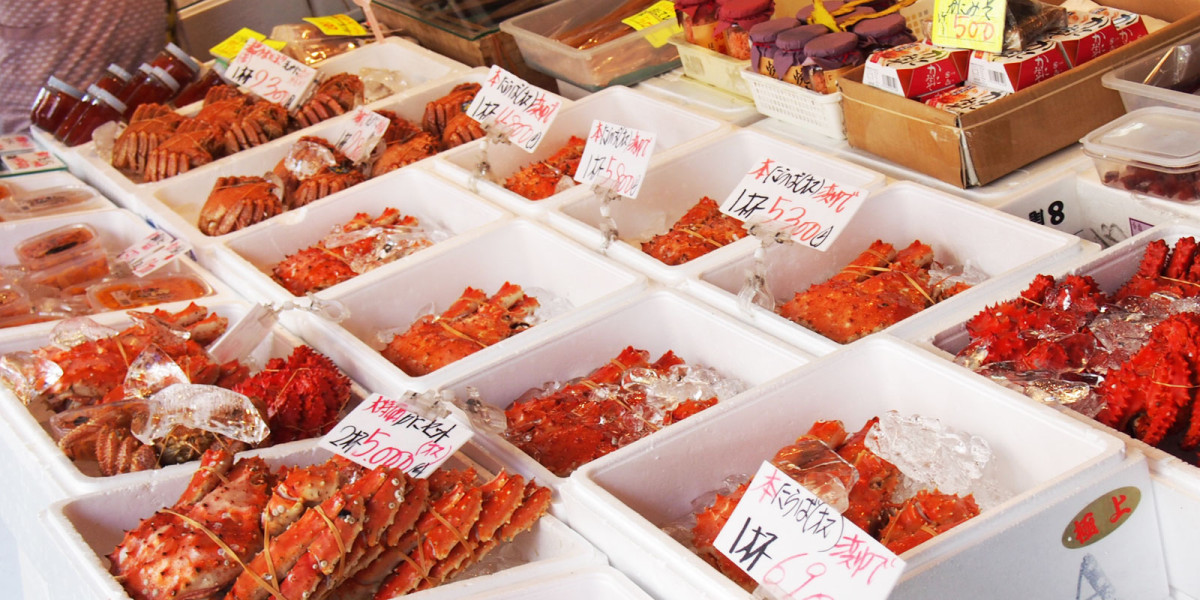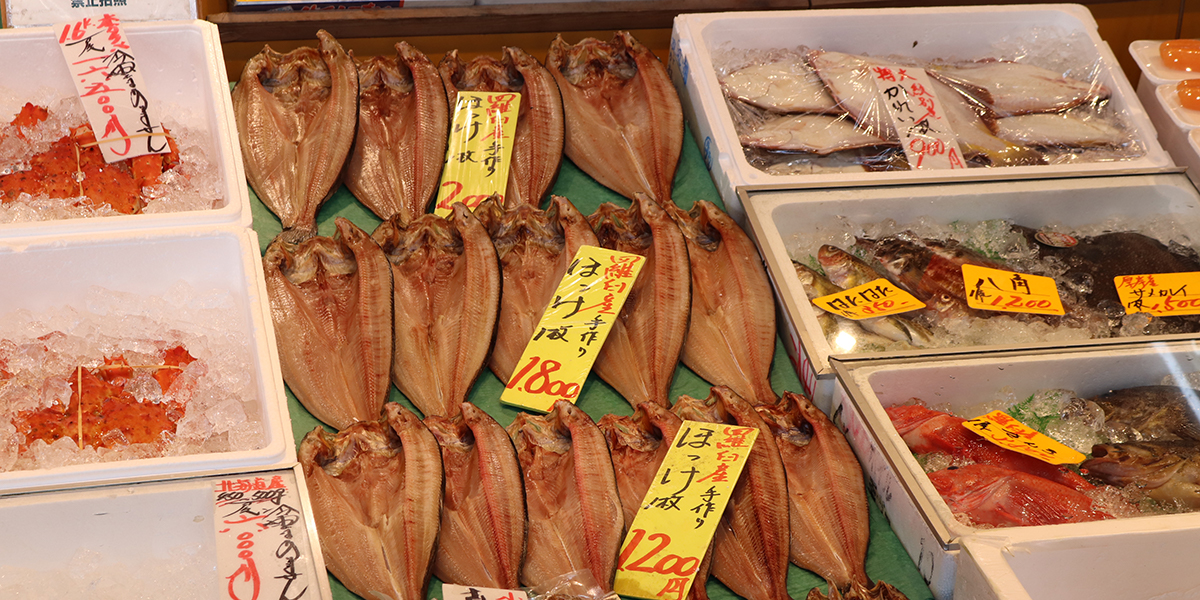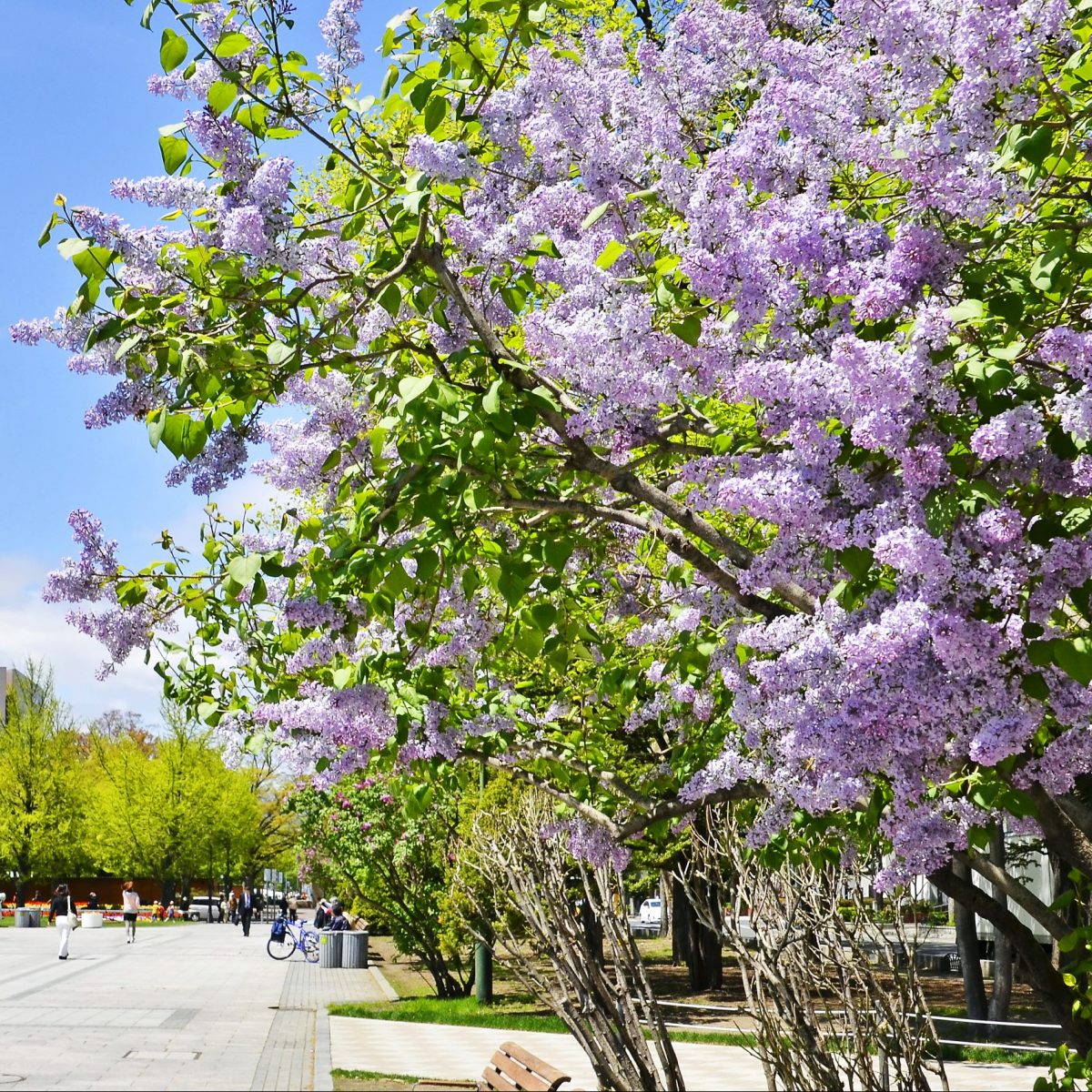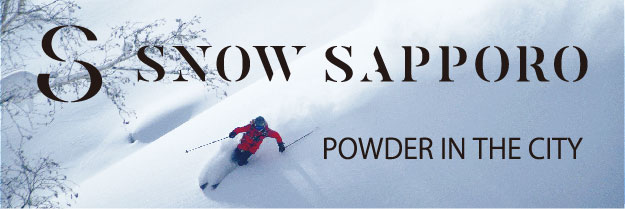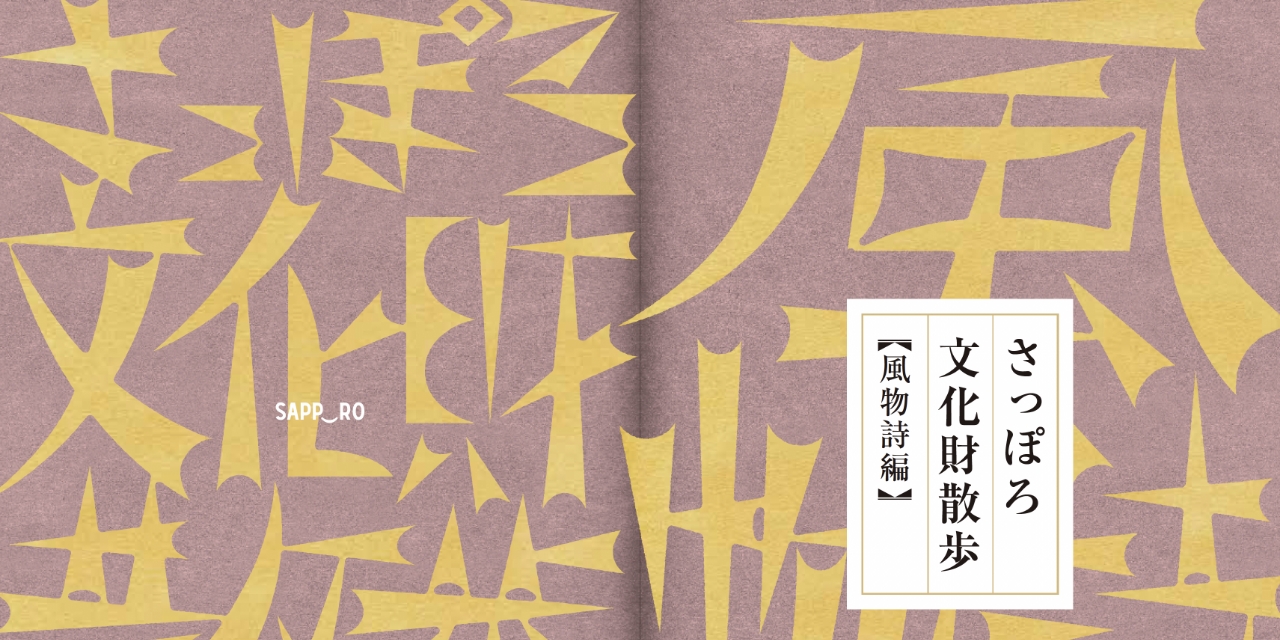
Story Behind Seasonal Symbols
Fully Appreciate the Seasons in Sapporo
ー Four Exquisite Seasons Woven
by Nature and People ー
Sapporo is known to have four distinct seasons, with temperatures below freezing in the winter and exceeding 30°C in the summer. The mountains can even be seen from the center of the city, making life in the metropolis more pleasant. What makes life in Sapporo even more exciting are the people’s activities and the various festivals and events that are always taking place somewhere. Here is a collection of various scenes in Sapporo throughout the year.
Both Cherry and Plum Blossoms Bloom in May
in Sapporo.
In March, when the snow melts, butterbur sprouts and adonis start to bloom, and in April, pretty corydalis flowers in white, light blue, and light purple can be seen in Maruyama Primeval Forest. At this time of year, skunk-cabbage by the water is also at its peak. During the spring in Hokkaido, many kinds of flowers bloom simultaneously in a short period of time. They bloom energetically as if to celebrate the end of winter. Northern flowers and grasses share the joy of welcoming spring with people.
Cherry blossoms in Sapporo usually bloom from late April to early
May. With the Golden Week holidays overlapping, cherry blossom
viewing spots are crowded during this period. It is also
Hokkaido’s culture that many people enjoy jingisukan and barbeque
under the cherry blossoms. In Maruyama Park, there are about 160
Ezo-Yamazakura and Somei-Yoshino cherry trees. Normally, fires are
strictly prohibited here, but this time of year is the only
exception. Fires are permitted and even charcoal stoves are
available for rent. There are also many other famous cherry
blossom viewing spots in the city, including the approach to
Hokkaido Shrine, Nakajima Park in Chuo-ku, Moerenuma Park in
Higashi-ku, Toyohiragawa Sakuranomori, Noushi Park in Nishi-ku,
Benizakura Park in Minami-ku, and more.
In Honshu and other regions, the plum blossoms bloom much earlier than the cherry blossoms, but in Sapporo, they bloom in early May, almost simultaneously with the cherry blossoms. Hiraoka Park in Kiyota-ku is home to 1,200
plum trees, which attract 100,000 to 200,000 visitors during the
blooming period.
In late May, when the city is colored with lilacs, the black lilies are also at their best on the Hokkaido University campus. In Honshu, it is known as an alpine plant, but in Hokkaido, it blooms in lowland areas. The number of black lilies declined sharply in the early Showa Era, but a revival project brought them back to life in 2006.
-

Cherry blossom viewing at Maruyama Park -

Black Lilies at Hokkaido University
The City with Graceful Lilacs
A Tanka poem by the poet Isamu Yoshii, which appeared in the morning edition of the Hokkaido Shimbun newspaper on June 16, 1955, fascinated the people of Sapporo.
“Lilas Bloom in Every House and People in Sapporo Live Happily”
Lilas is the French word for lilacs. Although Yoshii stayed in
Sapporo for only one week, the exotic scenery of purple and white
lilac flowers blooming simultaneously in parks and in the gardens
of houses must have made a strong impression on him.
The lilac, a flower native to Europe, was first brought to Sapporo
from the United States by Sarah Clara Smith, who founded Hokusei
Gakuen in the mid-Meiji Era. The cool climate of Sapporo suited
it, and the number of trees quickly increased. Finally, it was
designated as the official city tree of Sapporo in 1960. The
oldest lilac tree in Sapporo, believed to have been brought by
Smith, still exists in the Hokkaido University Botanical
Gardens.
Odori Park, where about 400 lilacs are planted, is one of the
venues for the Sapporo Lilac Festival in late May. Free lilac
saplings are distributed at the festival, and concerts are held.
During this festival time, the weather can still be unstable and
become cold. The locals call this return of the cold “lilac chill”.
-

Lilacs blooming in Odori Park

Cherry Blossoms to Commemorate Judge Shima Yoshitake
The pioneer judge, Yoshitake Shima, was the one who decided
the location of the Sapporo Shrine (present-day Hokkaido
Shrine). He later returned to his hometown to fight in the
Saga Rebellion and lost his life. Before his death, Shima told
his close friend Senkichi Fukudama that he wanted to see the
cherry blossoms of Sapporo. So Fukudama later planted 150
young cherry trees, which he collected from the mountains, along
the approach to Sapporo Shrine in memory of
Shima. This is the origin of the cherry blossoms at Hokkaido
Shrine.
*Senkichi Fukudama: In 1869, Fukudama came to Sapporo from
Saga with Yoshitake Shima as his squire. The following year,
Shima was dismissed and returned to Tokyo, but Fukudama
remained and lived as a farmer in Teine Village.
-

Cherry blossoms at Hokkaido Shrine
Exciting and Spectacular Sapporo Festival
Starting with the festival at Miyoshi Shrine on May 15, several annual festivals in the city center are held continually. There is YOSAKOI Soran Festival in early June, followed by Sapporo Festival (Hokkaido Shrine Festival) on June 15. During Sapporo Festival, various dedication events are held in the precincts of Hokkaido Shrine. In addition, Nakajima Park is filled with approximately 400 show booths and stalls. In the past, many workplaces in the city gave their employees the day off, and stores would display flowers and lanterns to create a festive atmosphere.
On June 16, four portable shrines, each dedicated to one of the three pioneer deities and Emperor Meiji, would parade through the city. Since Hokkaido Shrine was built by the Meiji government, those portable shrines are humbly carried by bearers dressed in courtly costumes like the ones that appear in a dynastic picture scroll. The procession is led by the sound of flutes and drums played by a band of performers modeled after the Boshin War Imperial Army, “Ishin-Kinno-tai”. Following the imperial-court-style procession are nine commoner-style floats from each festival district. Colorful floats, musical performances, hand dances, and mechanical puppets delight the eyes and ears of spectators. The procession, which stretches about 1.5 km from the front to the back, takes a full day to walk a 10 to 15 km route that is arranged to go through the city center and the festival districts of the year. In the past, horses pulled the floats, but now that it has become more difficult to procure horses, they are pulled by cars or tractors.
For children, the best part of the festival must be the show
booths and stalls in Nakajima Park. In the days when the city was
still underdeveloped, Sapporo Shrine was a little too far for the
people to casually visit. Therefore, festival stalls lined up
along the Sosei River near the city center. However, the area was
too narrow and dangerous when crowded, and it also blocked
traffic. So, it was relocated to its current location in Nakajima
Park around 1955.
On a side note, there is a superstition that has been spread among the locals for many years: If the festival at Miyoshi Shrine is sunny/rainy, Sapporo Festival will be rainy/sunny. A study of past
weather records show that many years have not actually followed
this superstition.
-

Sapporo Festival
Owned by Sapporo City Archives -

Festival Stalls in Nakajima Park
Sapporo’s Climate Makes Beer Delicious
One of the main events of the Sapporo Summer Festival, Sapporo Odori Beer Garden is held for about a month. It is one of the largest beer festivals in Japan, with a total seating capacity of about 13,000. The event is filled with locals and tourists enjoying Sapporo’s short summer.
Sapporo Summer Festival started in 1954 under the name of Shoko
Summer Festival to attract tourists and provide recreation for the
locals. The main venue in the early years was Nakajima Park, where
a variety of events were held, including musical performances, a
Tanabata Festival, children’s sumo wrestling, firefly watching,
Bon Odori Dance Festival, and a costume parade. The costume parade
was especially popular because it was a contest-type event. The
main venue was moved to Odori Park in 1957.
The first beer garden in Odori Park was held in 1959. With the
cooperation of the Nippon Bartenders’ Association and beer
companies, this event was realized as a welfare support project,
with a part of the proceeds donated to a welfare organization.
According to the recollection article, one of the reasons for
starting this project was a comment from a member of the Sapporo Tourist Association: “A festival is not complete without sacred sake.” In those days, there were hardly any beer gardens held in
open spaces such as Odori Park, and many people considered it
immoral to drink alcohol during the daytime. Some were worried,
but when the event opened, it was a huge success, much to the
relief of those in charge. With the crisp heat and refreshing breeze, the beer in Sapporo during the summer is exceptional, earning a high reputation and making Sapporo Odori Beer Garden a popular summer event.
The history of beer in Sapporo dates back to 1876, when a beer brewery was established as one of the government-run factories during the Kaitakushi era. The Kaitakushi (Development Comission) focused on beer as a processed product that would enhance the commercial value of Hokkaido’s agricultural products. Initially, Tokyo was to be the location of the brewery, but Hisanari Murahashi from the Satsuma Clan, who had studied in Europe, objected to this plan. He argued that the brewery should be built in Sapporo, which was close to the raw material production area, located at the end of a delta abundant with high quality underground water, and had a cool climate similar to Europe. In addition to breweries, a variety of food factories were built on the east side of Sosei River, where there was an abundant supply of water and “memu” (meaning “spring” in Ainu language).
-

Sapporo Odori Beer Garden -

Sapporo Beer Museum
Bon Odori is Two-Tiered: Children and Adult Parts
In the middle of August, Bon Odori dance festivals are held everywhere in the city. At some sites, sweets are handed out to the children, making many exciting memories for citizens. In many cases, Bon Odori in Hokkaido is divided into two segments: children’s part (earlier hours) and adults’ part (later hours). Generally, the children’s part features the playing of “Kodomo Bon Odori Uta” (Children’s Bon Odori Song), followed by the performance of “Hokkai Bon Uta” in the adults’ segment. These songs were composed in Hokkaido.
The origins of Hokkai Bon Uta were impromptu songs spontaneously
sung among coal miners. There were no fixed lyrics, and sometimes,
they would get drunk and sing lyrics one wouldn’t want their
kids to hear. Following WW2, aiming for the children to enjoy
themselves in a safe and enjoyable environment, children’s
songwriter Ichiro Tsubomatsu penned the lyrics and Masayuki
Yamamoto composed the music of Kodomo Bon Odori Uta, often
accompanied by the familiar ”shanko shanko” calls.
On the other hand, many adult Bon Odori songs have been composed.
Sometimes TV stations publicly sought lyrics or
record labels commissioned lyricists, and as a result, more than
300 lyrics were written. When Michiya Mihashi released the record of “Hokkai Bon Uta,” the record gained national recognition.
Even if there is no reason to divide adults and children today, Bon Odori in Hokkaido maintains the two-tiered form along with these two songs. At the Hokkai Bon Odori in the Sapporo Summer Festival (Odori Park), tourists can be seen jumping in and participating.
-

Hokkai Bon Odori at the Odori Park
From the Short Summer to the Season of Dazzling Autumn Leaves
By late August, the air is already cooler in the mornings and evenings. The occasional return of the heat subsides by early September, and the seasons move quickly towards the first snowfall, which could come as early as late October. Starting from the tops of the mountains, the color of autumn leaves gradually spread to the foothills.
Japanese rowan, the tree often seen along streets and in parks, is the first tree to turn red in urban areas. When its berries and leaves turn bright red, people feel the arrival of autumn, and are reminded of the fact that winter is almost upon them. In many autumn foliage viewing spots in the city, trees begin to change colors from late September to early October, and are at their best from mid to late October.
The Ginkgo Avenue that stretches 350 meters from Hokkaido
University’s Kita 13-jo Gate welcomes many visitors when it
becomes a tunnel of golden color in late October. This is the time
when Hokudai Konyousai is held. Visitors can enjoy the
illuminated ginkgo leaves and experience crafts using fallen
leaves.
In the suburbs, the Jozankei area, including the Hoheikyo Dam, is
the most popular autumn foliage viewing spot. At the Sapporo
Kokusai Ski Area, special gondolas operate to offer an
exceptional view of the colorful panorama from above.
Started in 2008, Sapporo Autumn Fest is held around Odori Park. It
is a new tradition to celebrate the harvest season and satisfy
your taste buds. Each chome (block) has its own concept with local
specialties, seasonal food, local delicacies, ramen, and sake
from across the island all put together.
-

Gingko Avenue
(Golden-Leaf Festival at Hokkaido University) -

Sapporo Autumn Fest

Jozankei Autumn Splendor:
A Cherished Delight for Past and
Present Sapporo Citizens
Jozankei area has long been the people’s favorite place to view the autumn leaves. In the past, salarymen enjoyed riding the Jozankei Railway, which no longer exist, and arriving at the hot springs while leisurely enjoying the spectacular view from the train window when they went on Kampu-kai (autumn recreational trip) . Even today, Futami Tsuribashi suspension bridge in the hot-spring village, Shiraito no Taki waterfall, and Hoheikyo Dam are popular.
-

Autumn leaves in Jozankei (Nishikibashi bridge)
The Largest Illumination Event Ever Held in Japan
As Christmas approaches, illumination events (holiday light displays) are held nationwide. Harajuku Omotesando in Tokyo, Huis Ten Bosch in Nagasaki, and Kobe Luminarie are especially popular. In fact, their precursor is White Illumination in Sapporo.
Sapporo’s sightseeing season used to be mainly from Spring to
Autumn about 40 years ago. Sapporo sought for the means to convey
the season’s appeal. The Christmas tree at Rockefeller Center in
New York, US was considered as a key. Popular musicians perform
live concerts during the lighting ceremony, and the area around
the tree is always bustling with tourists and locals. “Isn’t it
possible in Sapporo too?” people discussed.
Thus on November 12, 1981, the event was realized under the name of White
Illumination Sapporo Plaza. A Christmas tree-shaped artwork was
placed in Odori Park and 1048 lights were lit. Under the
Christmas tree, an electronic organ concert was held. The event
was broadcasted nationwide.
The venues gradually increased, and in 1985, the event was
recognized with the Urban Landscape Award from the then Ministry of Home
Affairs and Sapporo city government. From that point, tourism
purposed lighting displays started to be held across the
nation.
Currently, around 81000 LEDs have replaced the light bulbs and wrap the
town with a magical glow.
-

White Illumination:1982
Owned by Sapporo City Archives -

White Illumination:2015

Cash Grabbing Event at the Tanukikoji Shopping Arcade
“Cash Grabbing”, a popular event at the Tanukikoji Shopping Arcade started in 1949. Buy something at the Arcade and a lottery ticket will be provided. If you win the lottery, you can try the cash grabbing. Currently, 1000 yen banknotes are used, but in 1958, people were astonished as the newly introduced 10,000 yen notes were employed for it.
-

Cash Grabbing Event
Sapporo Snow Festival Started by Junior High and High School Students
The Sapporo Snow Festival is now widely known both in Japan and abroad. It is not widely known that the impetus for the festival’s inception came from the desire of commerce and industry officials to do something about the ever-increasing crime among young people after the end of the war.
The reference was the Snow Festival of Kitatemiya Elementary School in Otaru, a snow sculpture-making event that had been held since before the war. They thought it would be a place for young people to vent their energy and also attract tourists, killing two birds with one stone.
In February 1950, students of two junior high schools and three
high schools, guided by art teachers, carved six small snow
statues at Nishi 7-chome of Odori Park, which was then used as
a snow dumping ground. In those days, snow darkened with soot was
piled up and compacted to create a firm surface for chiseling out.
Compared to the precision of today’s snow statues, the finish was
rough. Other than snow statues, there were many kinds of
attractions such as a singing contest, square dancing, an
entertainment show, dog races, ski costume parade, and movie
screenings. It was a great success, attracting many citizens. The
event was decided to continue the following year and beyond.
During the 4th Festival in 1953, the snow statue called Shoten
(Ascension) created by the then Fushimi High School (now Sapporo
Technical High School) was 15 meters tall. The students previously
measured the height of the buildings surrounding Odori Park
and decided the snow statue’s size. “Something made of snow is
easily damaged. Then why not make a big one that pleases
people?” This was the onset of the large sculpture trend we see today.
Citizen sculptures were added from the following 5th event, and
from the 6th event, the Ground Self-Defence Force joined in carving the sculptures. On the other hand, junior and senior high school
students left the event due to the increasing difficulty in
balancing studying for entrance exams or searching for jobs.
From the late 1950’s to the early 1970’s, the Snow Festival gained
recognition not only nationwide but also worldwide. The Makomanai
site operated as the second venue between 1965 and 2005.
On the vast premises of the Ground Self-Defence Force’s Makomanai
Base, huge snow sculptures with snow slides stood in a row, gaining enormous popularity among children.
Currently the Festival is held at three venues, Odori Park,
Community Dome “Tsudome”, and Susukino (Ice World). Events such as the International Snow Sculpture Contest are also held.
-

Shoten (Ascension) (The 4th Sapporo Snow festival)
Owned by the Sapporo City Archives -

Hoheikan (historical guest house)
Cultural Heritage Related to the Story
| Names of the cultural heritage | Status | Location |
|---|---|---|
| Mt. Maruyama Primeval Forest | National monuments | Mt. Maruyama |
| Maruyama Park | Not designated | Miyagaoka, Chuo-ku |
| Black lillies on the Hokkaido University Campus | Not designated |
Kita 11-jo, Nishi 10-chome, Kita-ku (On the campus of Hokkaido University) |
|
Sapporo’s oldest lilac (Botanic Garden of Hokkaido University) |
Not designated | Kita 3-jo, Nishi 8-chome, Chuo-ku |
| Botanic Garden of Hokkaido University | Sapporo Furusato Culture 100 Selections | Kita 2-jo, Nishi 8-chome, Chuo-ku |
| Odori Park | Sapporo Furusato Culture 100 Selections | Odori nishi 1 to 12-chome, Chuo-ku |
| Lilac Festival | Not designated | Odori Nishi 5 and 6-chome, Chuo-ku |
| Miyoshi Shrine | Not designated | Minami 1-jo, Nishi 8-chome, Chuo-ku |
| YOSAKOI Soran Festival | Not designated | Chuo-ku, Sapporo and others |
|
Sapporo Festival (Hokkaido Shrine Festival) |
Sapporo Furusato Culture 100 Selections | Inside the Hokkaido Shrine, Miyagaoka 474, Chuo-ku |
| Nakajima Park | Sapporo Furusato Culture 100 Selections | Nakajima Park, Chuo-ku |
|
Beer Garden (Sapporo Summer Festival) |
Not designated | Odori Nishi 5 to 8, 10, 11-chome, Chuo-ku |
| Sapporo Beer Museum | Sapporo Scenic Assets < Number 31 | Kita 7-jo, Higashi 9-chome, 1-1, Higashi-ku |
| Hokkai Bon Uta | Not designated | Located throughout the city |
| Hokudai Konyousai at Hokkaido University | Not designated | Kita 13-jo, Nishi 5 to 7-chome, Kita-ku |
| Sapporo Autumn Fest | Not designated | Odori Nishi 4 to 11-chome, Chuo-ku |
| Sapporo White Illumination | Not designated | Odori Nishi 1 to 6-chome, Chuo-ku |
| German Christmas Market in Sapporo | Not designated | Odori Nishi 2-chome, Chuo-ku |
| Tanukikoji Shopping Arcade | Sapporo Furusato Culture 100 Selections | Minami 2-jo, Nishi 1 to 9-chome, Chuo-ku |
| Sapporo Snow Festival | Not designated | Odori Nishi 1 to 12-chome, Chuo-ku |
*Some of the above lists are not open to the public.
Let’s Visit the Cultural
Assets Related to This Story!
-

Hokudai Konyousai at Hokkaido University
The ginkgo tree avenue at Hokkaido University is a feast for the eyes during the autumn festival. The 380-meter-long avenue is lined with towering trees, their leaves ablaze in vibrant shades of yellow.
-

Black lillies
on the Hokkaido University CampusBlack lilies, which were once a symbol of writer Arishima Takeo, have been brought back to life thanks to the efforts of members of the Hokkaido University Art Club “Black Lily Society” that he founded. They bloom in late May, a reminder of the author’s legacy.
-

Sapporo Beer Museum
(Former Sapporo Beer Manufacturing)A Hokkaido heritage that is a reminder of the Meiji era, this facility is where visitors can experience the history of Sapporo Beer, which played a major role in the development of the prefecture.
-

Sapporo’s oldest Lilac
Sarah Clara Smith was a missionary who came to Japan in 1876. She was a strong advocate for women’s education and in 1887, founded the women’s college, Hokusei Gakuen. The tree that she brought from the United States is a symbol of her commitment to education and her love of nature.
-

Botanic Garden of Hokkaido University
The Hokkaido University Botanical Garden, with an area of 13.3 hectares, is home to about 4,000 species of indigenous plants from Hokkaido. During the spring, visitors can enjoy delicate flowers, while in autumn, colorful leaves can be seen on all the trees.
-

Hokkai Bon Uta, Children’s Bon Dance
The Northern Sea Bon Dance is a summer festival that has been held in Hokkaido since the early 1900s. The children’s Bon dance song, which is based on a traditional Japanese folk song, is a popular part of the festival. The song is a reminder of Hokkaido’s rich cultural heritage and its welcoming spirit.
-

Miyoshi Shrine
The Miyoshi Shrine in Sapporo, known as “Sankichi-san,” is a popular destination for visitors during its annual festival on May 15. The highlight of the festival is a grand performance of Noh theater, which attracts people from all over the city.
-

Maruyama Park
Maruyama Park, a popular cherry blossom viewing spot in Sapporo, is known for its unique Hokkaido-style cherry blossom viewing style. Before the COVID-19 pandemic, people would gather there to eat Genghis Khan (grilled lamb) over a BBQ.
-

Sapporo Festival
The Hokkaido Shrine Festival, also known as the Sapporo Festival, is held every year from June 14 to 16. The highlight of the festival is the “Shinkosai,” a parade of floats and mikoshi (portable shrines) that is reminiscent of a Heian-period picture scroll.
-

Mt. Maruyama Primeval Forest
Located just 15 minutes from Sapporo Station by car, this mountain is a great place to enjoy nature. With trees that are over 150 years old and a relatively low elevation at 226 meters, it is a perfect spot for a leisurely hike.
-

Nakajima Park
Nakajima Park is a hidden gem of natural beauty in the heart of Sapporo. The park is home to a variety of trees, flowers, and ponds, creating a stunning and peaceful setting. It is no wonder that the park has been selected as a top 100 best urban park in Japan.
-

Check Out All the Cultural Properties
in the Story!
-

Chinese Restaurant “Hotei” Main Branch
Hotei Chinese Restaurant, located on the city tram line, is a popular destination for both locals and tourists. The restaurant is known for its generous portions of “zangi,” a fried chicken dish that has been popular since the restaurant opened. The restaurant also offers a variety of casual set meals and Chinese dishes that are sure to please.
Minami 1-jo Nishi 9-chome 1-3, Chuo-ku, Sapporo
-

Scully’s Maruyama
A stylish and sophisticated Italian restaurant and bar that serves organic dishes made with fresh, locally-sourced ingredients.
Ko-to minamimaruyama 1F,Minami 5-jo Nishi 25-chome 2-5, Chuo-ku, Sapporo
-

Kitakaro Sapporo Main Branch
A former library and art museum, the Kitakaro Sapporo store is in a historic building with a rich history. It was first built during the Taisho era and has been carefully restored to its original beauty. The store is a popular destination for both locals and tourists, and is also a great place to learn about Hokkaido’s history and culture.
Kita 1-jo Nishi 5-chome 1-2, Chuo-ku, Sapporo
-

Maruyama Zoo
For over 70 years, Maruyama Zoo has been a cherished Hokkaido landmark. Home to diverse animals, playful polar bears, and majestic lions, the zoo’s innovative new facilities offer interactive experiences for every generation.
Miyagaoka 3-1, Chuo-ku, Sapporo
-

Chitosetsuru Sake Museum
Step inside the Chitosetsuru Sake Museum and embark on a journey through the world of Sapporo sake. Learn about its history and production, as well as sample a variety of sake, including limited-editions right from the brewery, and their one-of-a-kind soft serve ice cream.
Minami 3-jo Higashi 5-chome 2, Chuo-ku, Sapporo
-

Sapporo Central Wholesale Market and Outdoor Market
Dive into a world of culinary delights at the market! Discover a treasure trove of fresh seafood, Japanese specialties, and local souvenirs, all at friendly prices. Shop in the morning, savor a delicious lunch at the market, and immerse yourself in the vibrant atmosphere.
Kita 11-jo Nishi 21-chome, Chuo-ku, Sapporo
-

Sapporo Ichiryuan
Ichiryuan is a popular ramen shop in Sapporo that serves up delicious miso ramen made with Hokkaido wheat noodles and matured miso. The shop’s signature dish, “Genki no deru miso ramen,” is made with odorless garlic that adds a flavorful punch.
Hokuren BLD B1F, Kita 4-jo Nishi 1-chome 1, Chuo-ku, Sapporo
-

Rokkatei Jingu Chaya store
“Hangansama” is a limited-edition treat that can only be found at the Hokkaido Shrine Teahouse. The name pays homage to the Hokkaido Commissioner who helped build the city of Sapporo.
474-48, Miyagaoka, Chuo-ku, Sapporo
-

Sapporo Genghis Khan Main Branch
Sapporo Genghis Khan is more than just a restaurant. It is a taste of Hokkaido’s wilderness. The lamb is raised on Hokkaido’s vast, open pastures, where it roams free and eats a diet of fresh grass and wild plants. The result is a lamb that is both tender and flavorful.
Sapporo Clark Hotel 1F, Kita 13-jo Nishi 4-chome 1-15, Kita-ku, Sapporo
-

Recipe for Happiness Parfait Shop – Odori Store
This patisserie specializes in “shime parfait,” a type of dessert that is unique to Sapporo. Shime parfaits are known for their elaborate, whimsical, and fairytale-like creative designs.
2nd Contact Off BLD 1F, Minami 2-jo Nishi 4-chome, Chuo-ku, Sapporo
-

Sapporo City Museum
This patisserie specializes in “shime parfait,” a type of dessert that is unique to Sapporo. Shime parfaits are known for their elaborate, whimsical, and fairytale-like creative designs.
Odori Nishi 13-chome, Chuo-ku, Sapporo
-

Noriea Ferris Wheel at Norbesa
Take a ride on NORIA, Hokkaido’s only rooftop observation wheel, and enjoy stunning views of Sapporo’s cityscape and the neon lights of Susukino.
Minami 3-jo Nishi 5-chome 1-1, Chuo-ku, Sapporo
-

Yozora no Genghis Khan Main branch
This restaurant is a great place to experience the best of Hokkaido cuisine. Its speciality serves up fresh, flavorful lamb meat from a local farm, grilled with a house sauce that is sure to tantalize your taste buds.
MY Plaza BLD 10F, Minami 4-jo Nishi 4-chome, Chuo-ku, Sapporo
-

Otarutei Susukino Building Branch
Otarutei is more than just a restaurant. It’s an experience. The restaurant’s fresh, seasonal Hokkaido ingredients, including seafood and wild game, combined with the skilled craftsmanship of its chefs, create dishes that are both visually stunning and delicious.
Susukino BLD 4F, Minami 4-jo Nishi 3-chome, Chuo-ku, Sapporo
-

Cafe de gohan
Cafe de Gohan, on the Hokkaido University campus, is a popular spot for students and locals alike. The cafe offers a variety of food and drinks,including croissants, as well as Hokkaido University soft-serve milk ice cream. Enjoy your meal surrounded by the beautiful changing seasons or take it to go.
Kita 8-jo Nishi 5-chome, Kita-ku, Sapporo
- Publishing
-
Sapporo City Council for the Promotion of Historical and Cultural
Town Development
(The secretariat: Cultural Properties Division, Culture Department, Citizen’s Cultural Bureau, Sapporo City) - 10F Sapporo Clock Tower Building 2-chōme-1 Kita 1 Jōnishi, Chuo Ward, Sapporo,
- TEL 011-211-2312
- March 2023


